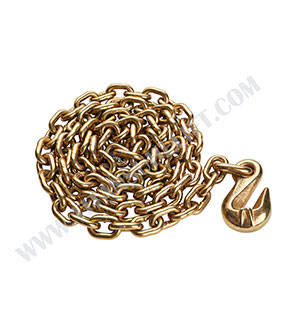In order to further standardize the use and management of hand chain hoists, this regulation is formulated.
The applicable scope of hand chain hoists
Hand chain hoists with a lifting weight of 0.5-20 tons and a structure of positive gear transmission.
General provisions for hand chain hoists
Each hand chain hoist must be equipped with product use and maintenance instructions, production permit marks, and product qualification certificates, and have clear and durable nameplates.
Overloading or inclined lifting is strictly prohibited, and it is prohibited to lift heavy objects buried in the ground or condensed on the ground.
The support point for suspending the hand chain hoist must be firm and stable.
When the weight of the lifted object exceeds 50kg, a steel wire rope should be used. The safety factor for hanging and binding with a steel wire rope shall not be less than 3.5.
It is strictly prohibited to hook the hook of the hand chain hoist onto the lifting chain or to untie the lifting chain into single chains to lift heavy objects.
It is strictly forbidden to throw hand chain hoists.
Users must not modify the original design of the product, and the replacement parts must meet the original design requirements.
Regulations for the use of hand chain hoists
Inspection before lifting
A special person should be responsible for checking and confirming that all parts must be intact, the transmission parts and lifting chains must be well lubricated, and the empty operation must be normal.
It is strictly prohibited to use the hook tip to hang heavy objects.
The lifting chain must not be twisted or knotted, and the hook assembly of the double-row chain hand chain hoist must not be turned over.
The hook should be on the vertical line of the weight center of the heavy object, and it should be prevented from tilting and flipping. When using fixed lifting noses, lifting rings, lifting beams, and other lifting, a special person should be sent to inspect it before use, and it can be used only after confirming the safety.
When the hand hoist is lifted by three fulcrums, the legs of the three fulcrum frames must be opened evenly, the center of gravity should be found, the lower legs should be supported firmly, with anti-skid and anti-collapse measures and a special person should be sent to guard it. It is strictly prohibited to lift heavy objects by collision between the legs. When using the human-shaped trestle for lifting, the included angle between the two legs of the trestle should not exceed 45°, and the force should be between the two support legs. The cable or rope should be fixed firmly.
When using the single-leg trestle, the fulcrum and the supporting legs should be supported firmly, with anti-skid and anti-collapse measures. When used in groups, the balance should be well grasped, and measures should be taken to prevent tilting.
Operation
When operating, a safe and reliable lifting point should be selected, and a special person should be instructed. The first test lift should be performed. After the heavy object is off the ground, the hook head, steel wire rope sleeve, rigging, etc. should be checked in detail again before continuing to lift if the center of gravity is stable, the operation is normal, and the braking is reliable.
During the operation, the operator must not stand on top of the heavy object, nor leave the site when the heavy object is suspended in the air.
During the lifting process, no one is allowed to pass, walk or stay under the heavy object. Non-manual methods are not allowed to drive the hand hoist to lift heavy objects. If it is found that it cannot be pulled, the pulling force must not be increased. It must be stopped immediately and checked whether the heavy object is stuck with other objects, whether the weight of the heavy object exceeds the rated lifting capacity, and whether the hoist parts are damaged. The lifting or descending distance of the heavy object must not exceed the specified lifting height to prevent damage to the machine parts.
It is strictly prohibited to use two or more hand chain hoists to lift the same heavy object at the same time.
During use, a special person should monitor the safety of the lifting point, steel wire rope, rigging, and operators, and the operator should exert force evenly and cannot stand in the area where the lifting chain is stressed and bounced, in order to prevent chain breakage and injury.
For the installation, disassembly, and movement (extension) of large and medium-sized equipment, targeted safety technical measures must be formulated and implemented after approval.







































